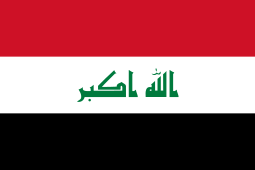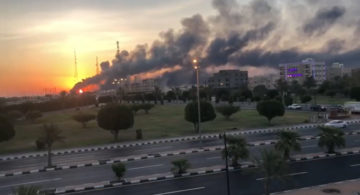Can Iraq Deliver?

By A. F. Alhajji
World Oil, June, 2010
While opportunities to develop the oil sector in Iraq are unmatched by those in any other country, many daunting challenges stand in the way. Opportunities include large and easily accessible oil reserves, the use of new technology in fields that haven’t seen state-of-the-art production methods since the 1980s, and the presence of a skilled national labor force with exceptional experience in the oil sector. In addition, opening upstream resources to global capital and expertise on an unprecedented scale constitutes a paradigm shift that creates opportunities within Iraq and might lead to the opening of oil sectors in other countries.
Unfortunately, challenges abound: continued political instability and violence, millions of Iraqi refugees that remain outside the country, some aging and damaged oil fields, old technology and difficulties in transferring technology, and lack of basic infrastructure, with several choke points including electricity, water, export pipelines and terminals. Brain drain is one of the most serious problems, and it will plague Iraq’s oil industry for a long time. The lack of a strong legal and administrative framework, the lack of a hydrocarbon law, and corruption will hinder the growth of Iraq’s oil industry. On the national front, resource nationalism, shared fields with neighboring countries, and conflicting interests with OPEC and its members will cast their shadow on Iraq’s oil development.
Production capacity expansion. Official announcements by the Iraqi government and oil companies involved in Iraq claim that the country will increase its production capacity to about 12 million bpd by 2017. The conventional wisdom among experts, including a large number of Iraqi experts, is that Iraq cannot achieve this target within the indicated timeframe, on one hand, and that it is not in Iraq’s best long-term interest to increase production to that level so quickly, on the other.
NGP Energy Capital Management, the Irving, Texas-based private equity firm at which I am employed, has conducted an in-house, field-by-field study to assess the impact of future expansion of Iraq’s oil production capacity on world oil markets. The research covered various technical, economic, political and legal areas. It also contained detailed analysis of past capacity expansions in countries that had suffered from political turmoil, such as Iran, Kuwait, Russia, and Iraq itself.
One of the major conclusions is that, in the best of circumstances, meaningful capacity expansion takes time—at least three years. In the case of Russia, production increased by 1 million bpd in the first three years after a series of reforms in 1998 that followed the financial crisis and the devaluation of its currency, the ruble. Capacity increased again by 2 million bpd in the following three years. But Russia was not able to keep up the hefty growth: It took the country the past six years to increase production by only 0.5 million bpd. Will Iraq experience the same fate, especially since it is starting from a smaller production base than that of Russia?
The history of Iraq tells a similar story. It took three years to restore production capacity after Iran caused major damage to Iraqi oil fields during the Iraq- Iran war. It took Iraq another 31⁄2 years (between 1986 and 1990) to increase production by more than 1 million bpd. After the start of the UN oil-for-food program in early 1997, it took Iraq another three years to restore its production capacity. After the US invasion, it took Iraq more than four years to restore pre-invasion production capacity.
The NGP study introduced three scenarios. In the base case, NGP expects Iraq’s production capacity to reach 4.9 million bpd by the end of 2017. In its best-case scenario, production could reach only 6 million bpd. However, even under the worst-case scenario, production should increase from current levels to 3.3 million bpd. The bottom line: The official figure of 12 million bpd by 2017 is highly exaggerated.
Capacity expansion and world demand. Based on NGP estimates of world supply and demand by the end of 2017, any increase in Iraq’s production by 2017 above 4.3 million bpd would depress oil prices. The world can absorb an additional 1.5 million bpd increase in Iraq’s production while maintaining relatively high prices. If Iraq achieves the target of 12 million bpd by 2017, oil prices will collapse to less than $18/bbl. Neither Iraq nor the IOCs will benefit from a large increase in Iraq’s oil production.
Under the base-case scenario, Iraq’s oil production capacity would reach 4.9 million bpd, but the market would be able to handle only 4.3 million bpd. The 600,000-bpd difference could be held as spare capacity, or it would compete in world oil markets with oil from other countries and put some downward pressure on oil prices. On the other hand, if Iraq cannot produce 4.3 million bpd by 2017, it will put upward pressure on oil prices.
The NGP study concludes that the main determinant of the size of the expansion would be world oil demand. Neither Iraq nor the participating oil companies benefit from crashing the world oil market. There could be downward pressure on oil prices if Iraq’s production capacity increases too quickly. In addition, NGP expects nationalism to increase, leading to less foreign investment in Iraq’s oil sector and less production capacity expansion than currently planned. Shortages of water and electricity, and inadequate infrastructure and skilled workers, will also slow down the production growth. Given the limited increase in Iraqi production and the situation of the oil market after 2017, the impact of such an increase on world oil prices is limited.
In short, Iraq cannot deliver. If the Iraqi government achieves its goal of 12 million bpd by 2017, it will significantly disturb the oil market. The comforting thought is that this target is not achievable. WO












Comment